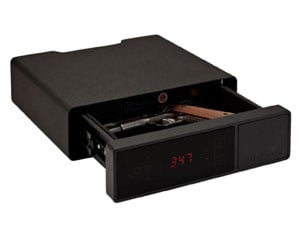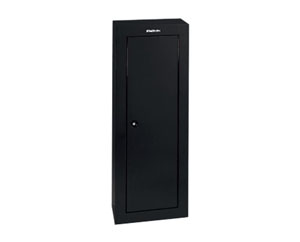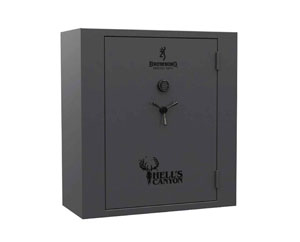How to Select
a Gun Safe
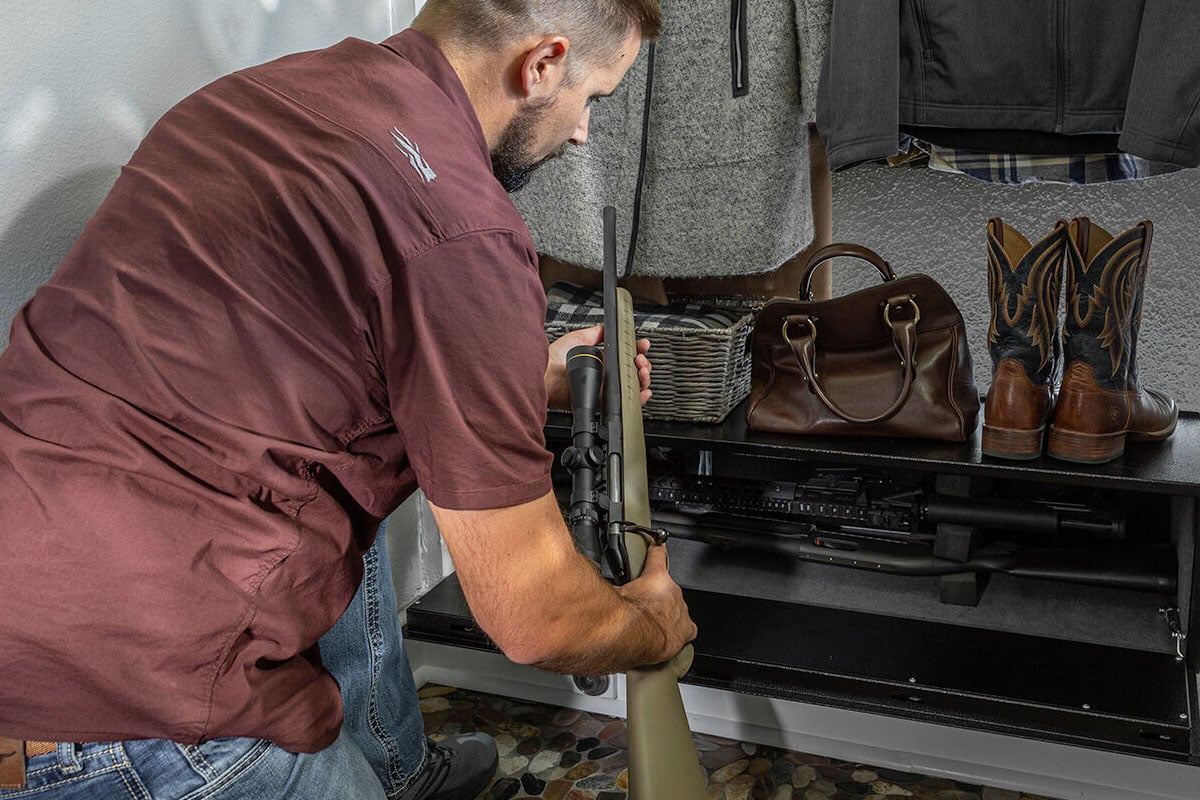
As soon as you buy your first firearm, you face the question of where to store it. With the purchase or inheritance of each additional gun, this question becomes even bigger – literally. At some point, most firearm owners choose to invest in a gun safe.
A gun safe is a serious investment, so you want to put some thought into your purchasing decision. This guide will help you set your priorities and do your homework before making this necessary lifetime purchase.
How Gun Safes Protect Your Family & Firearms
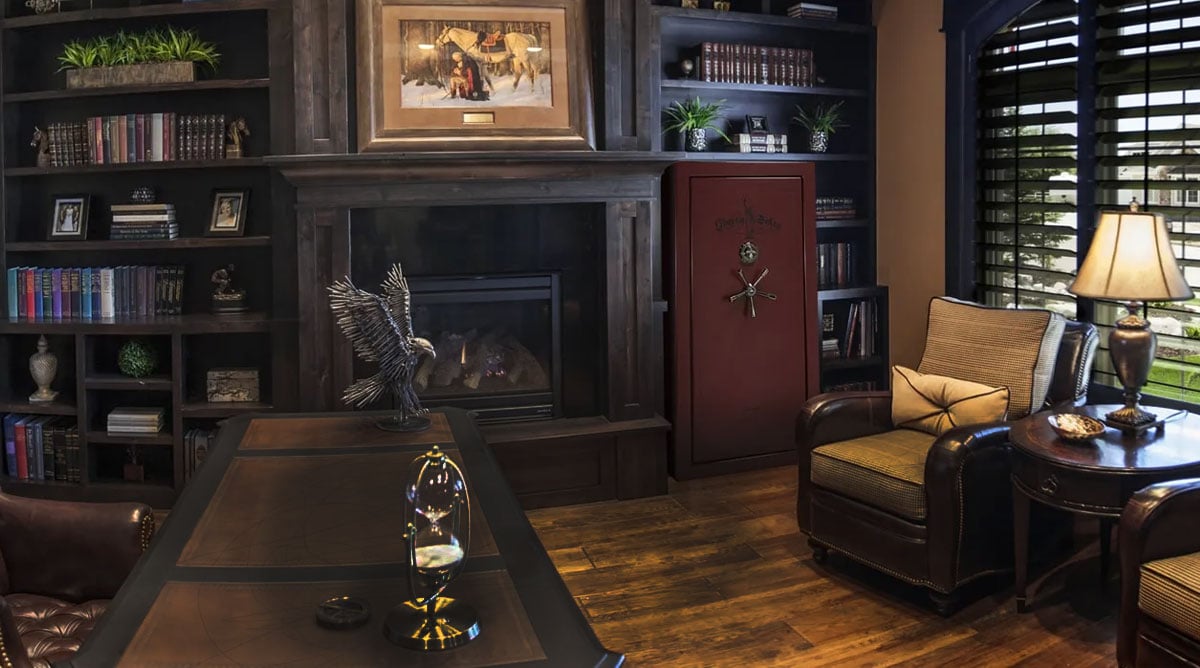
Every gun owner should seriously consider investing in a gun safe. The number one reason is your family’s safety. If you have children, a gun safe prevents those too young to understand how to handle a gun safely from accessing your guns. Even if your children are fully educated and capable of handling guns, a quality gun safe keeps your firearms away friends and family who may come over. Many states legally require firearm owners to securely store their firearms away from children.
A gun safe will also keep your firearms safe from fire damage. Fire is one of the greatest risks to a person’s firearms, and you don’t want your valuable guns being melted or otherwise damaged by a house fire. (More on this below.)
Finally, a good safe keeps your firearms from being stolen. It is unlikely that a thief will come to your home prepared to break into a quality safe. Instead, they’ll likely use whatever tools are handy in your garage or basement to try to break into it after discovering it.
Of course, the best way to keep potential thieves away from your firearm collection is to keep it out of the public knowledge. How can a thief set out to steal something he doesn’t know exists? However, if your community already knows about your collection from shooting ranges or consignment sales, this may not be possible. A gun safe thus becomes your best option for protecting your guns from theft.
Types of Gun Safes
Above we discussed several factors that go into choosing a gun safe. Below we’ve compiled a comprehensive table of all the features to consider to help you make the best choice of gun safe.
Sportsman’s Warehouse carries a variety of excellent gun safes for various purposes. These are just a few examples to get you started considering which is the best for your unique needs.
Popular Gun Safes
Gun Safe Features
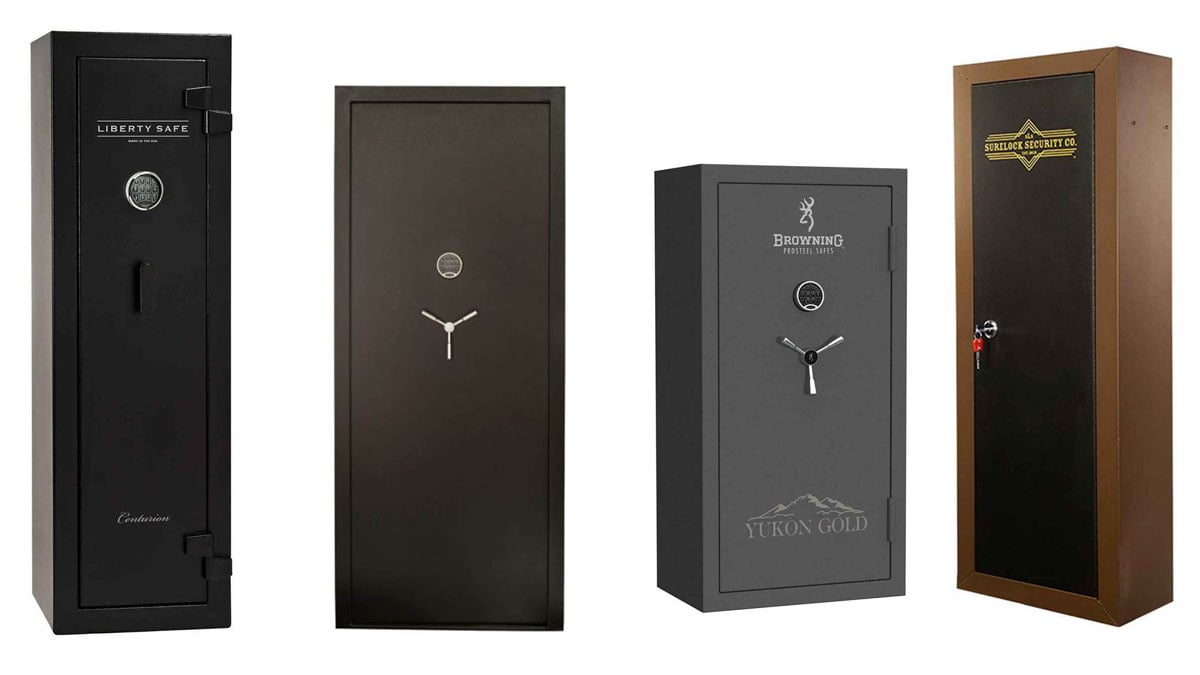
When you’re first looking for a gun safe, it can be overwhelming if you don’t know what you need to consider. Fortunately, there are key factors that will dictate what exactly your needs are and what kind of safes you should be looking at. These are:
Let’s dive into these factors one by one to help determine which type of safe is the best fit for you.
1. Size
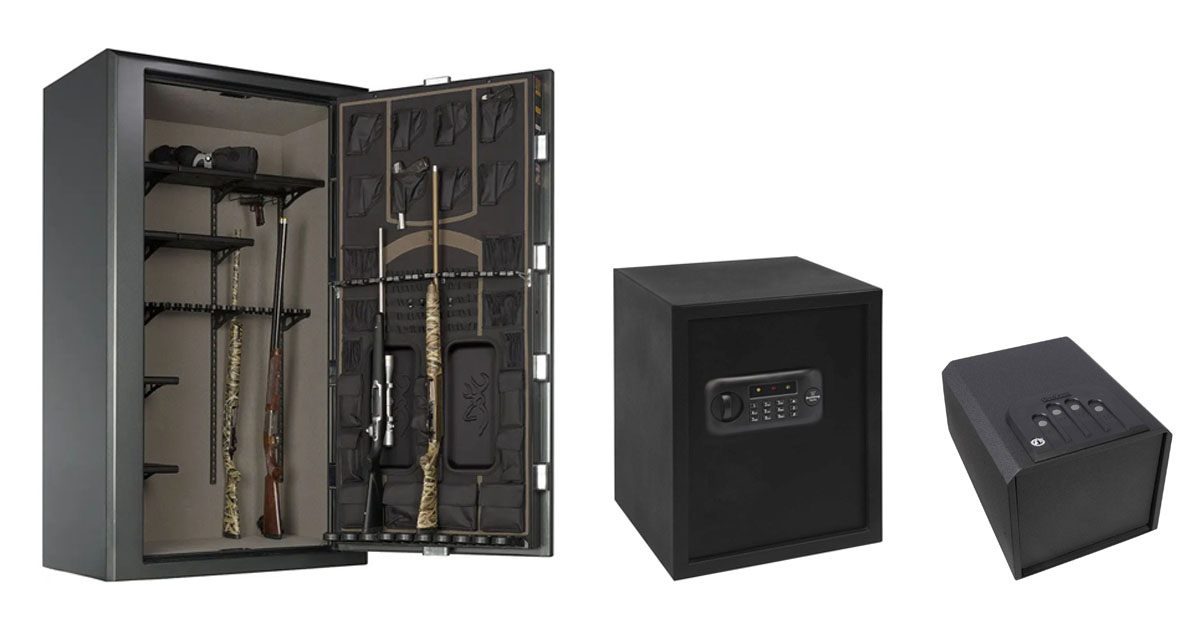
It may sound obvious, but your safe should be big enough for your firearm collection. Keep in mind that you may grow your collection over time. It’s better to buy more space than you think you need now, rather than having to purchase an additional safe in the future. In fact, plan to buy at least 1 ½ times as much space as you think you need.
There may be things you want to store in your fire-proof safe in addition to guns: important documents, valuables, or keepsakes. If you know you want to store these items in your gun safe, look for one that has drawers or filing space just for this purpose. Many manufacturers let you design the interior of your safe.
A gun safe may list a certain capacity: this refers to the number of gun slots the safe has. This measurement is based on un-scoped rifles or shotguns. When choosing your safe, consider whether you have larger guns that will take up more room.
And of course, make sure you are buying a safe appropriate for the type of firearm you’re storing: there are handgun/pistol safes and long gun safes.
2. Weight & Structure
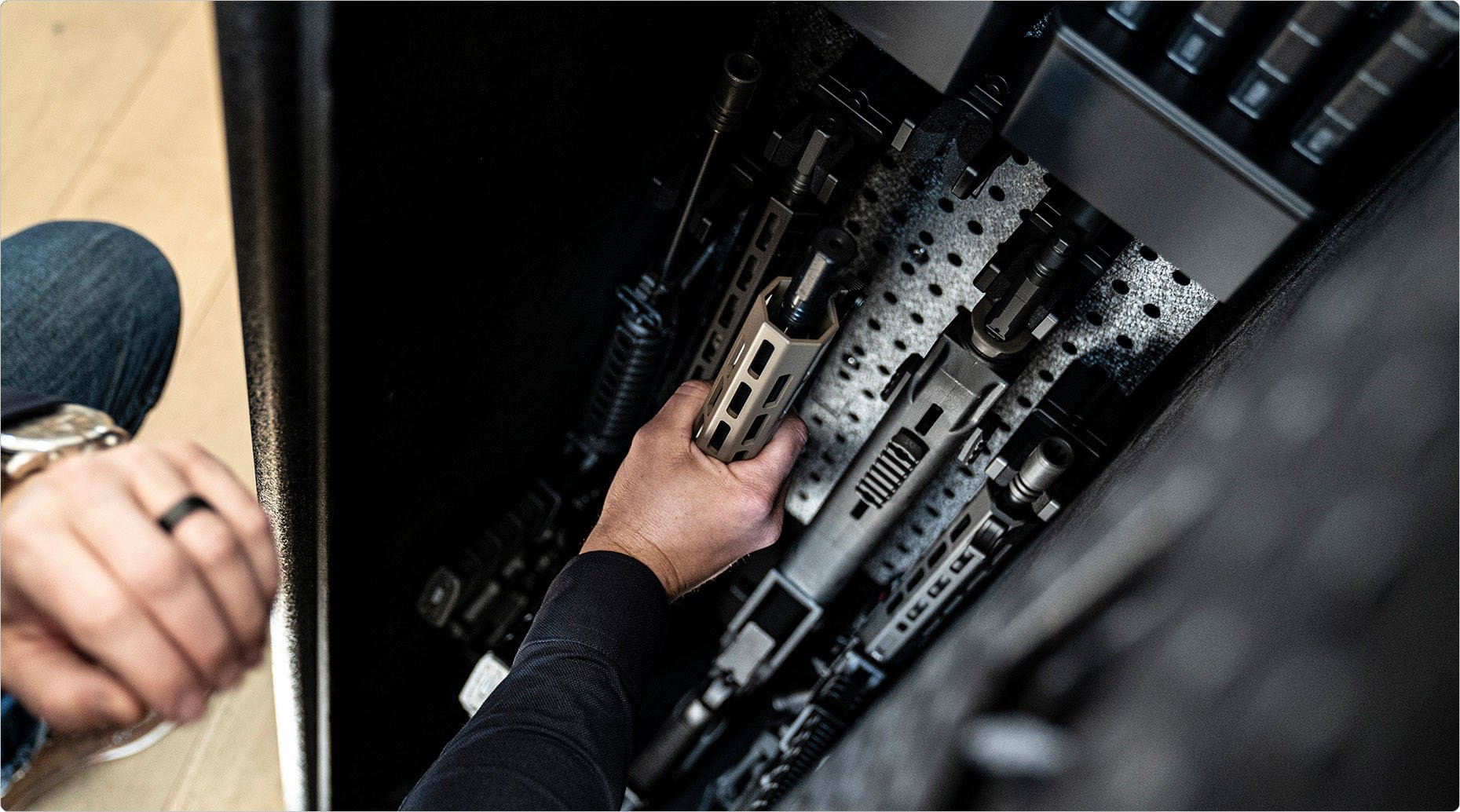
A lighter safe might sound nice to get into your house – but that also means it will be easier for a thief to get out of your house. A heavier safe will be harder to transport, and thus might just keep your firearms safer. Heaviness also often corresponds to thicker walls that are harder to penetrate.
Take the time to investigate the structure of the safe itself. Most marketing will focus on locks and bolts – and don’t get us wrong, those are important, too! But if the box itself is flimsy, it doesn’t matter how strong the lock is. Look for a safe with structure and insulation to withstand a house fire or a break-in with a serious tool like an axe. Make sure the door is sturdy, and that it makes contact with the rest of the safe past the door jamb. The door’s contact with the safe, not the number of bolts, determines how much support your safe really has. Your safe should use 14-gauge steel at least.
3. Mounting
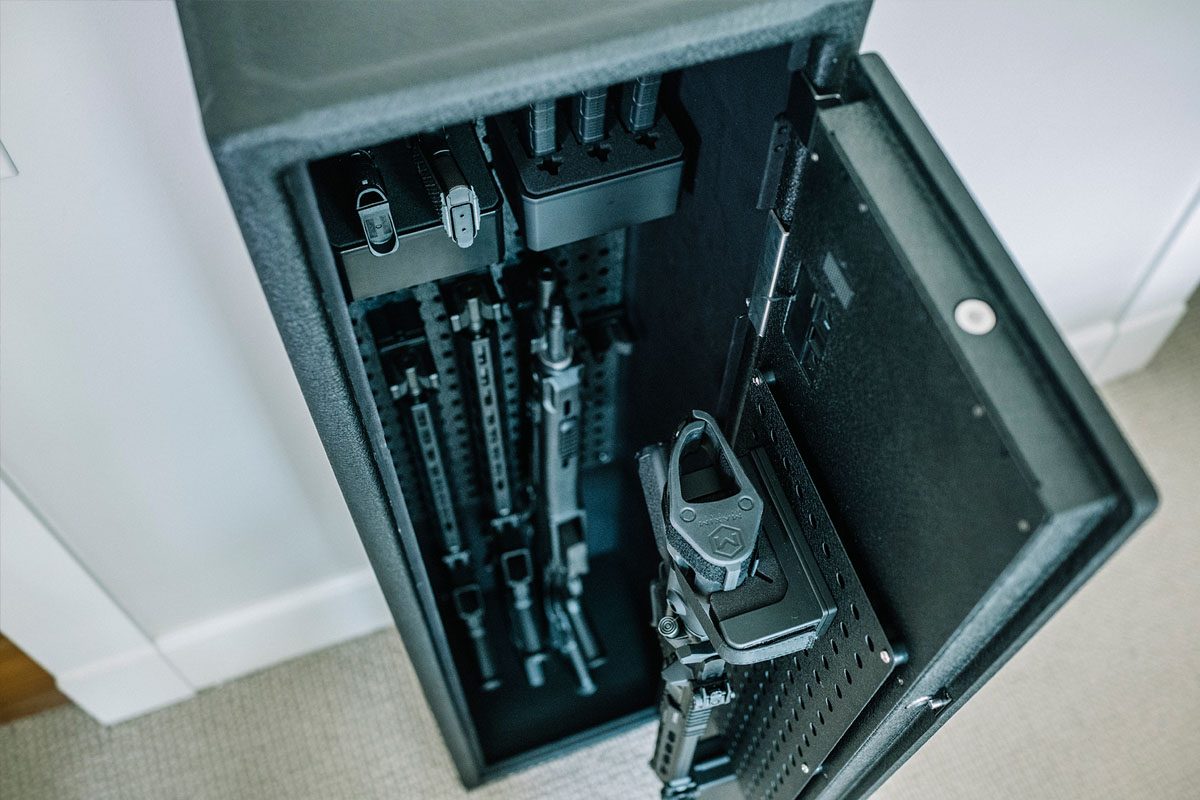
Many safes can be bolted to the floor or mounted to the wall, making it impossible for a thief to steal them. If this is possible in your dwelling, you may want to check whether a safe has this feature for added protection. Of course, make sure you measure your space and commit to a location before going this route!
Some safes can also be built into the wall of your home. This is very safe thanks to extreme difficulty of removal – but it won’t move houses with you if you move down the line.
Also consider where you plan to store your safe. Ideally, your safe should not be loud and obvious – this draws the thief’s attention to storage of valuables. Some safes can be stored in filing cabinets or made to look nondescript or hidden completely by mirrors, shelving, and more.
4. Storage Options

Maybe you are looking to get a large, heavy duty safe that will store many guns. If so, wall or floor mounting in your home will make sense for you. But many firearm owners want a smaller safe to store their weapons safely – what then?
Car gun safes may not have the high level of safety that a wall-mounted safe brings, but they do give added security for a handgun kept in a vehicle. These are small, portable safes often made for a single pistol or handgun. Truck gun safes are often made for either handguns or rifles, and give a bit of extra room above the car options. They can even fit into your existing console.
For more options at home, a nightstand gun safecan hide a handgun in plain sight by looking like a regular nightstand. This is a great option for home defense, as is a larger under-bed gun safe that can accommodate larger weapons such as rifles.
5. Fire Safety
An additional advantage of a gun safe is to keep your firearms safe from fire damage. If this is you, make sure that you are purchasing a fire-proof gun safe, and that you understand the insulation of the safe. Look at the type and thickness of the lining, how it is attached to the walls of the safe, and whether there are any gaps. Fire insulation such as gypsum has been highly effective: the gypsum emits steam when heated that helps to cool the air within the safe, keeping your firearms from melting even when surrounded by flames.
A safe’s weight is also a solid indicator of its fire safety. A heavier safe is likely using more or thicker layers of insulation than a lighter safe of the same dimensions. A safe should protect against temperatures of at least 1200 degrees Fahrenheit for at least an hour.
Keep in mind that there is no regulated fire rating specifically for gun safes. While some manufacturers may announce they follow certain fire safety standards, these are often developed for unrelated enterprises such as commercial structures. Make sure you are evaluating a safe’s fire safety yourself based on the above factors, rather than falling for an unrelated rating.
Some safes are designed for quick access – these may not include the kind of insulation necessary for fire protection. For sportsmen who are primarily looking for storage and safety from thieves, and are less concerned about natural disasters, skipping this protection may help the final budget.
6. Types of Locks for Gun Safes

There are pros and cons to each of the locks on the market today, and you should evaluate them based on your individual needs. The typical types are:
- Combination locks
- Electronic locks
- Biometric locks
Traditional combination locks are easy to maintain, difficult to hack, and require no battery swaps. It takes a while to enter your combination, they can be finnicky, and if you forget the combination, a locksmith will have to come bail you out.
Electronic locks have gained popularity in recent years. They are cost effective, can integrate with your home security system, and they’re easy to use. You don’t need a locksmith to change this combination. However, electronic locks have batteries that must be replaced, and if you forget the combination, it will be very hard for a locksmith to open.
Biometric locks are similar to electronic locks: they are also quick and can be matched with your other home systems. Some even connect to WiFi. However, this is a developing technology; at the time of this writing, they are not completely reliable.
Pros & Cons of Lock Types
Relockers
Many safes also offer Relockers, which are systems that take over in the event the lock is broken off or otherwise compromised. Basically, these lock the bars and bolts from within the safe. This can give added security if you are worried about the primary lock being removed.
Gun Safes & Metal Corrosion
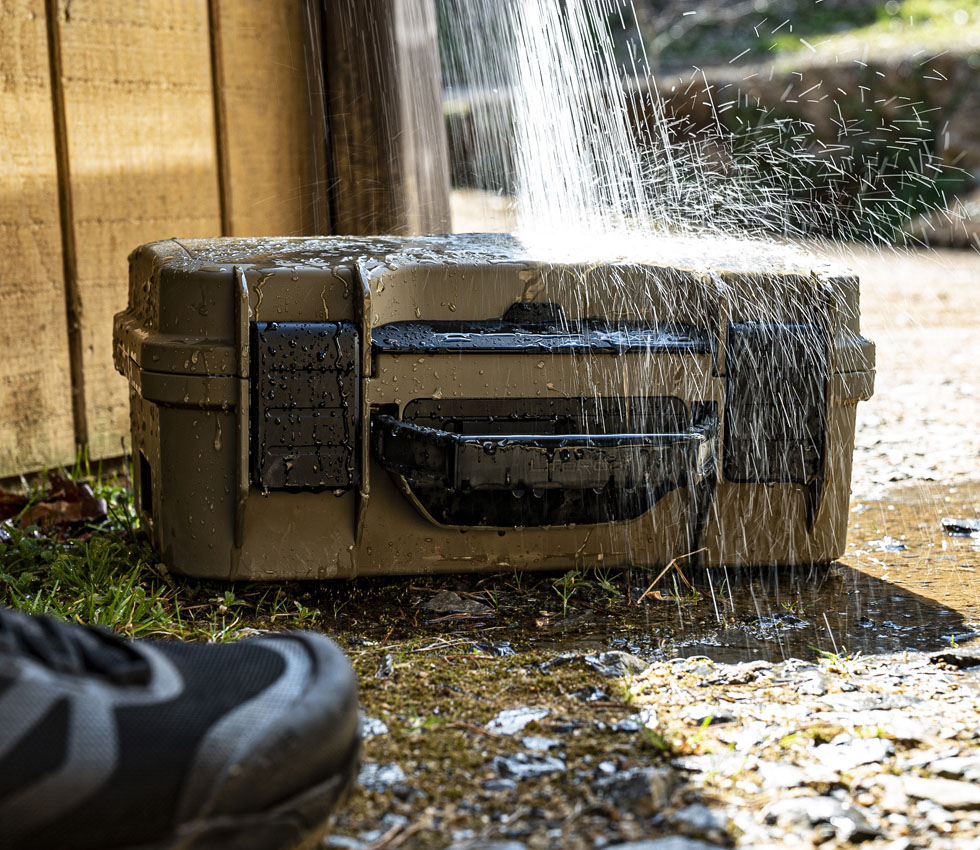
This can be an issue – so make sure you plan for it early. If moisture is trapped inside a gun safe, it has nowhere to go thanks to the fireproof insulation. This means that it is possible for your guns to corrode while in the safe. Corrosion can be prevented through:
- Preservatives
- Heating bars
- Protection bags
- Gun socks
To combat this, you can use preservatives such as intercept products, or sheets of copper applied to the outside of your gun. These sheets will corrode instead of your gun.
If your safe is set up for a heating bar, this can also minimize moisture in the safe, and therefore minimize chances of corrosion. You’ll need to use an electrical outlet or a hole in the safe for this – just make sure the hole is also fire-safe.
If you frequently take your guns in and out of the safe, protection bags and gun socks will be a more convenient option to prevent rust than the preservatives. You may also consider a safe with a raised floor, which will keep you from banging the guns on the lower lip of the safe walls as you bring them in and out.
Budget
Gun safes can be expensive – but so can guns! If you have a collection of precision or heirloom rifles, a gun safe is quite a bit cheaper than replacing your entire collection. If your firearm collection is fairly small and inexpensive, your safe may just need to provide a bit of extra security.
The more features the safe has, the more you’ll need to spend. However, these features (such as fire safety) may save you on your insurance, or may be required for full coverage. If you insure your firearms, find out how a safe will impact your insurance as part of your budgeting process.
The high-end safes can cost upwards of $4,000, but a basic safe runs more like $600. A good rule of thumb is to spend 10-20% of the value of everything you’ll be storing inside the safe on the safe itself.
Gun Safe Installation

It’s better to have a professional install the safe than to try to do it yourself. Safes are extremely heavy, and taking shortcuts may decrease the actual security of your safe. Many retailers have installation services you can take advantage of.
As you are installing the safe, think about how it looks in your home. To protect against thieves, it is best to disguise the safe – for example, put it in a drab filing cabinet labeled for something else. You don’t need to advertise that this box contains valuables.
In Summary
You’re almost ready for your search for quality gun safes. Before you start shopping, take a look at these key factors and decide what feels right for your unique needs and priorities.
- A gun safe is a worthwhile investment, and you may want to spend the money to get real security for your home. Plan to spend 10-20% of the cost of everything in your safe on the safe itself.
- Buy more storage space than you think you need, and consider your plans for storing other objects and growing your firearm collection.
- Make sure the insulation meets your standards: no gaps, thick layers, securely attached to the walls will give the strongest protection.
- Choose a lock based on your individual needs.
- A good safe is made with at least 14-gauge steel.
- Look at how much contact the door makes with the safe – not just how many bolts lock it there.
- Decide how and where you want to store your gun safe.
